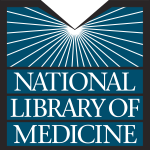- Industry: Library & information science
- Number of terms: 152252
- Number of blossaries: 0
- Company Profile:
The National Library of Medicine (NLM), on the campus of the National Institutes of Health in Bethesda, Maryland, is the world's largest medical library. The Library collects materials and provides information and research services in all areas of biomedicine and health care.
Human welfare and its influence by the environment, including technical and administrative measures for improving the human environment from a health point of view.
Industry:Biology; Chemistry
Hypersensitivity reaction to substances in the diet to which an individual has previously been sensitized.
Industry:Biology; Chemistry
Identification, assessment and control of physicochemical and biological factors in the workplace that may affect the health or well-being of those at work and in the surrounding community.
Industry:Biology; Chemistry
Illness (renal osteomalacia) observed in the Toyama prefecture of Japan, resulting from the ingestion of cadmium-contaminated rice.
Note: Damage occurred to the renal and skeleto-articular systems, the latter being very painful (“itai” means “ouch” in Japanese and refers to the intense pain caused by the condition).
Industry:Biology; Chemistry
Imperfect articulation of speech due to neuromuscular damage.
Industry:Biology; Chemistry
In a case control study, value obtained by dividing the rate at which persons in the case group are exposed to a risk factor (or to a protective factor) by the rate at which persons in the control group are exposed to the risk factor (or to the protective factor) of interest.
Industry:Biology; Chemistry
In competitive binding assays, the logit-log dose relationship, in which the response is defined by:
R = logit (y) = lg (y/(1 – y))
where y = b/b<sub>0</sub> with b = fraction of tracer bound and b<sub>0</sub> = value of b with no unlabelled ligand in the system.
Note: Logit-transformed assay data frequently yield straight-line dose-response data, amenable to statistical analysis. More generally in toxicology, the transformation is applied to dose-response data where b0 denotes the maximum response in the absence of a toxic substance.
Industry:Biology; Chemistry
In glass, referring to a study in the laboratory usually involving isolated organ, tissue, cell, or biochemical systems.
Industry:Biology; Chemistry
In glass, referring to a study in the laboratory usually involving isolated organ, tissue, cell, or biochemical systems.
Industry:Biology; Chemistry
In principle, the lowest concentration of an odorant in the air that can be detected by a human being.
Note: In practice, a panel of “sniffers” is often used, and the threshold taken as the concentration at which 50% of the panel can detect the odorant (although some workers have also used 100% thresholds). The odor concentration at the detection threshold may be defined as one odor unit.
Industry:Biology; Chemistry
